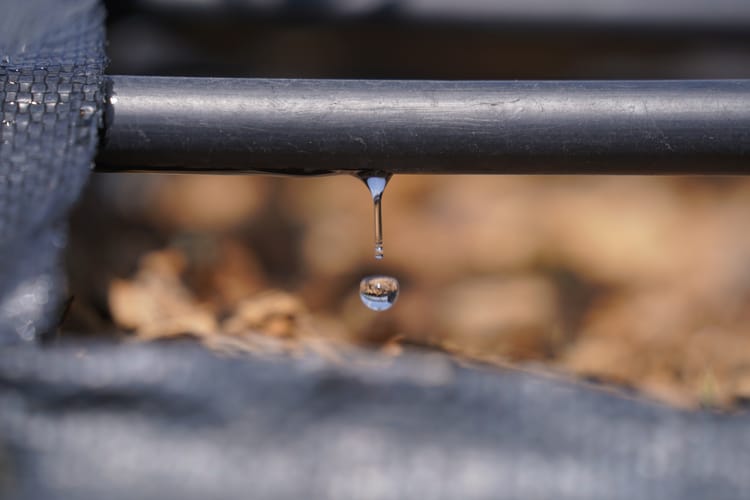DRIP IRRIGATION CAN BE A WIN-WIN SITUATION FOR INDIAN FARMERS
What is Drip Irrigation?
Drip Irrigation is a production tool that delivers water, plants nutrients, and chemicals:
- In the right place
- Incorrect amount
- At the right time
- Frequently
- With the highest efficiency & uniformity
This Drip Irrigation technique involves the slow application of water to the soil through a network of pipes, emitters, and valves, delivering water directly to the roots of the plants. This approach allows for precise and controlled delivery of water, which is particularly useful in areas with limited water resources, such as India. In this blog, we will discuss how drip irrigation can be a win-win situation for Indian farmers.
Water scarcity is a major problem in India, with many of the country's population dependent on agriculture for their livelihoods. With an increasing population and growing urbanization, the water demand is steadily increasing, leading to a significant strain on the country's water resources. Drip irrigation can help address this issue by using water more efficiently, reducing waste, and increasing crop yields.
Different Types of Drip Irrigation
-
Surface drip irrigation
The application of water to the soil surface as drops or tiny streams through emitters
The discharge rate for point-source emitters is generally < 8 L/h for single outlet emitters, and discharge rates for line-source emitters are generally < 12 L/h/m of lateral.
-
Subsurface drip irrigation
- The application of water below the soil surface through emitters, with discharge rates
generally, in the same range as drip irrigation. - Discharge rates vary between 1 to 3 L/h.
In Drip irrigation, the Application of water in the form of discrete droplets directly to the root zone of the crop through a network of pipelines.
Benefits of Drip Irrigation for Farmers
-
- More Efficient Use of Water: One of the significant benefits of drip irrigation is that it allows farmers to use water more effectively. Traditional irrigation methods, such as flood irrigation, can be very wasteful, with large amounts of water being lost due to evaporation and runoff. In contrast, drip irrigation delivers water directly to the roots of the plants, reducing water loss and ensuring that the plants receive the optimal amount of water needed for their growth. This can result in significant water savings, which can be crucial in regions with limited water resources.
- Enhance Crop Yield: In addition to being more water-efficient, drip irrigation can also increase crop yields. By providing plants with a consistent supply of water, drip irrigation can help ensure that crops are well-nourished and healthy, resulting in better-quality produce. Drip irrigation also allows for the precise application of fertilizers, reducing the risk of over-fertilization and potential harm to the environment.
- Reduce Labour Cost: Another advantage of drip irrigation is that it can help reduce labour costs for farmers. Traditional irrigation methods often require significant manual labour to operate, such as digging channels, flooding fields, and manually watering crops. Drip irrigation systems, once installed, require very little labour to operate, allowing farmers to focus on other tasks such as crop management and harvesting.
- More Efficient Use of Water: One of the significant benefits of drip irrigation is that it allows farmers to use water more effectively. Traditional irrigation methods, such as flood irrigation, can be very wasteful, with large amounts of water being lost due to evaporation and runoff. In contrast, drip irrigation delivers water directly to the roots of the plants, reducing water loss and ensuring that the plants receive the optimal amount of water needed for their growth. This can result in significant water savings, which can be crucial in regions with limited water resources.
Drip irrigation can also be beneficial for the environment. By reducing water waste and improving crop yields, it can help reduce the amount of land needed for agriculture, potentially reducing deforestation and other environmental problems associated with expanding agricultural land.
Drip irrigation can be a win-win situation for Indian farmers. By using water more efficiently, increasing crop yields, reducing labour costs, and benefiting the environment, drip irrigation can help improve the sustainability and profitability of farming in India. While the initial investment in a drip irrigation system may be high, the long term benefits can make it a worthwhile investment for farmers looking to improve their yields and income while also contributing to a more sustainable future.


COMMENTS
We'd love to hear your thoughts! To enter a comment, type your name and email address.